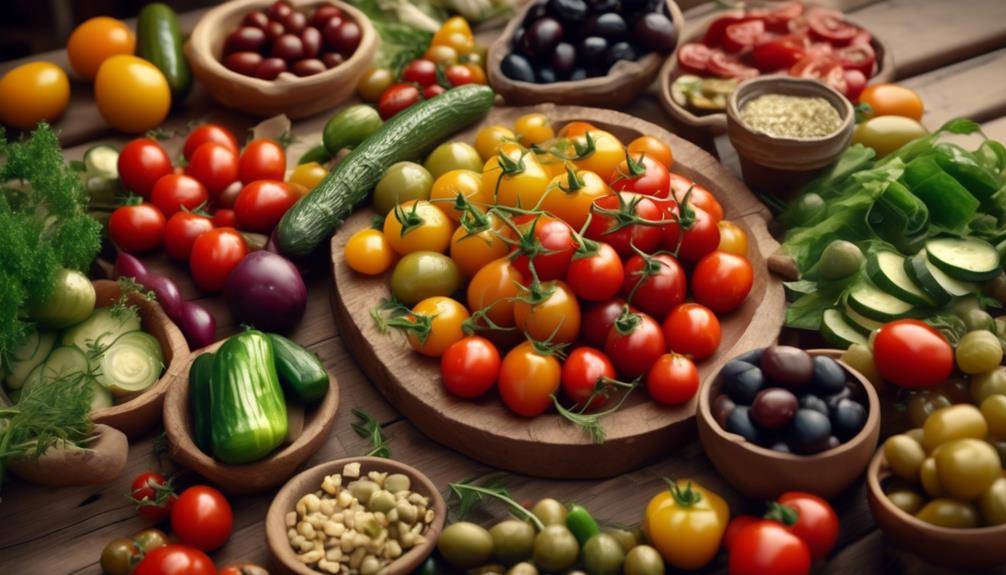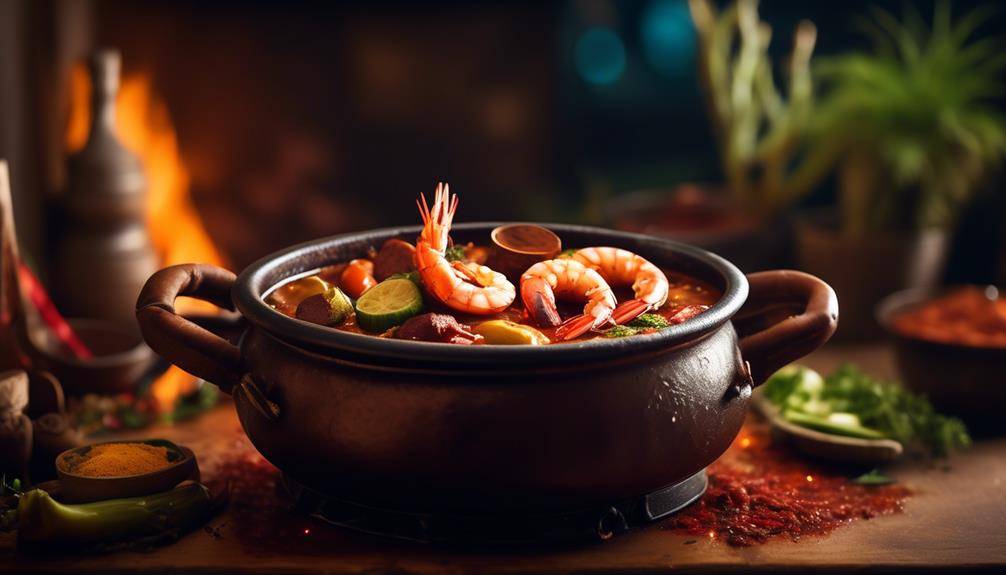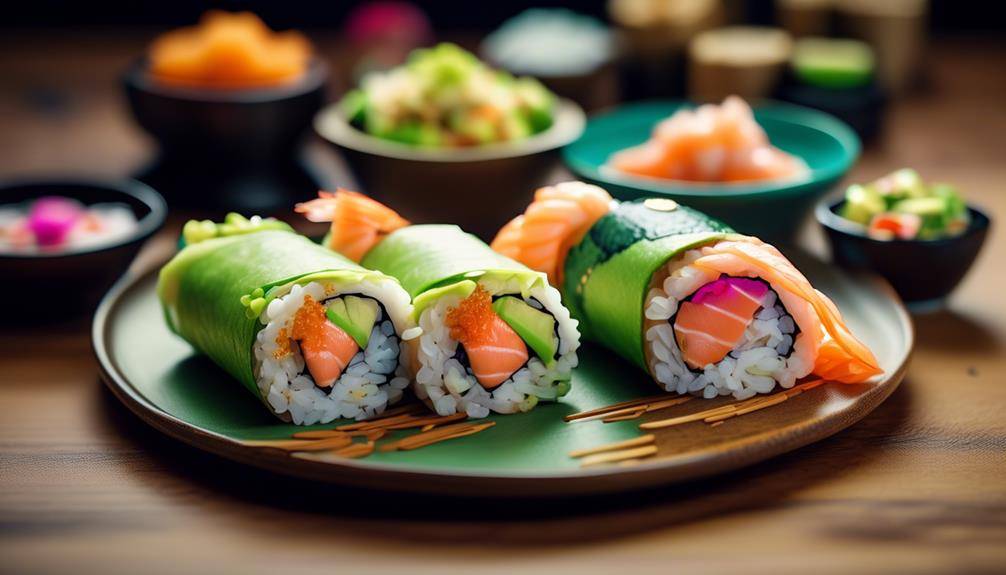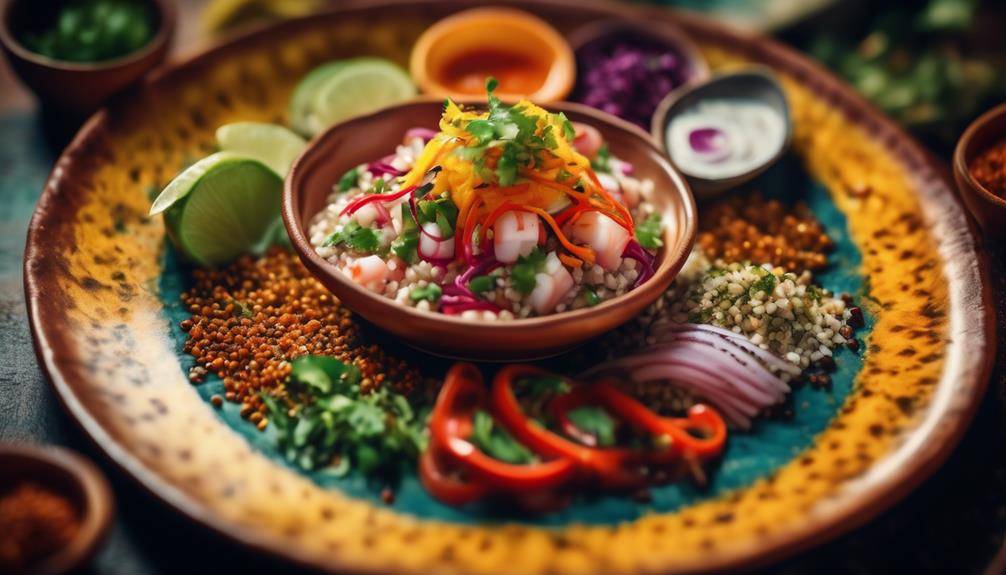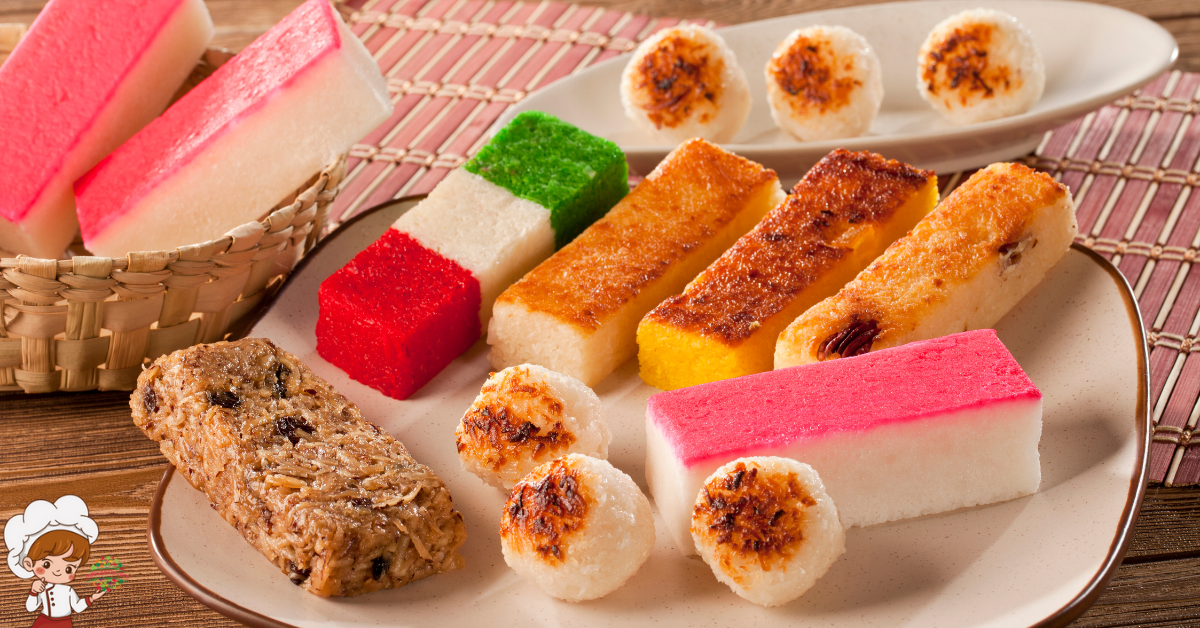The Best Spanish Breakfast Vs. Brunch
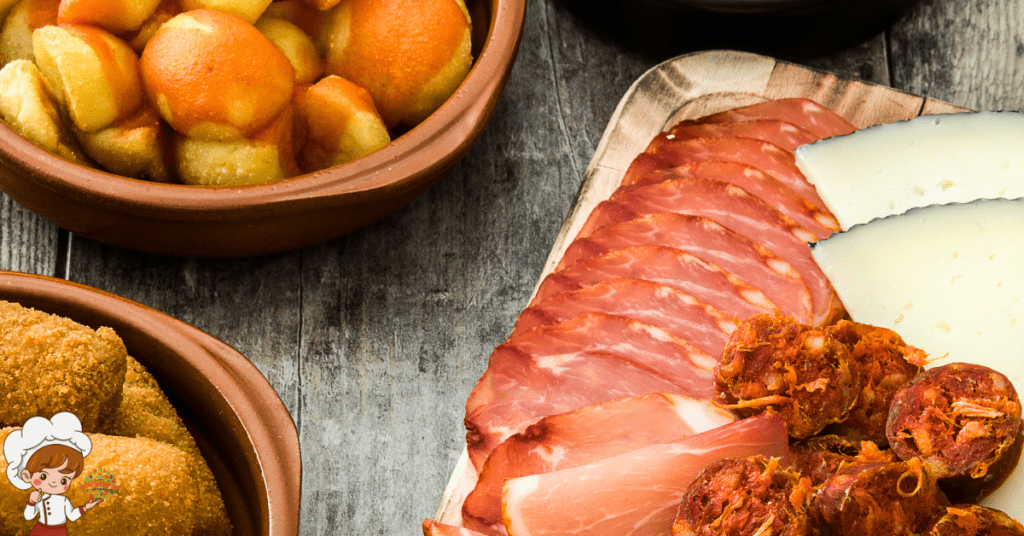
The Best Spanish Breakfast Vs. Brunch; Are you a fan of breakfast and brunch? Well, if you’ve ever enjoyed a hearty Spanish breakfast of churros and hot chocolate, you might be surprised to learn that it differs quite a bit from the popular brunch culture in many other countries. From the timing of the meals to the menu options and cultural significance, Spanish breakfast and brunch each have their own unique characteristics. So, if you’re curious to explore the fascinating differences between these two culinary experiences, grab a cup of coffee and prepare to be intrigued.
Timing
When it comes to the timing of Spanish breakfast and brunch, there are distinct differences that set them apart. Let’s start by talking about brunch, a meal that has gained popularity in recent years. Brunch time in Spain is known for its flexibility, allowing you to sleep in and enjoy a leisurely morning before heading out for a late breakfast. Unlike traditional breakfast, which is typically eaten early in the morning, brunch in Spain starts around 11 am and can go on until 2 pm. This extended time frame gives you the freedom to socialize and enjoy the relaxed atmosphere that brunch brings.
Brunch in Spain is not just about the food; it’s also about the experience. It’s a time to gather with friends or family, catch up on the latest news, and enjoy a laid-back morning together. The atmosphere is lively and vibrant, with people laughing and chatting over plates of delicious food. Whether you choose to have a traditional Spanish brunch with tortilla de patatas, croissants, and fresh orange juice, or opt for a more international spread with eggs benedict and mimosas, the focus is on enjoying good company and creating lasting memories.
On the other hand, Spanish breakfast is a more straightforward affair. It is usually enjoyed early in the morning, before the hustle and bustle of the day begins. While brunch offers flexibility, breakfast is about starting the day right with a hearty meal that fuels you for the day ahead. It’s a time to savor traditional morning staples like café con leche, toast with tomato, and churros dipped in hot chocolate. The atmosphere during breakfast is calmer, as people are focused on getting their day started and preparing for work or other daily activities.
Meal Size
The size of the meal is another key difference between Spanish breakfast and brunch. When it comes to meal portions, Spanish breakfast tends to be lighter and smaller compared to brunch. Here are a few points to consider:
- Spanish Breakfast: In Spain, breakfast is often a simple affair. It typically consists of a cup of coffee or tea, accompanied by a piece of toast or a small pastry. This modest meal is designed to provide a quick energy boost to start the day, without being overly filling.
- Brunch: On the other hand, brunch is known for its larger and more indulgent portions. Brunch menus often feature a variety of options, ranging from eggs, bacon, and sausages to pastries, pancakes, and waffles. It’s a meal that encourages leisurely dining and can be enjoyed with friends or family on weekends or special occasions.
- Cultural Significance: The difference in meal size between Spanish breakfast and brunch reflects cultural norms and traditions. In Spain, breakfast is seen as a quick and practical meal to fuel the body for the day ahead. On the other hand, brunch is a more social and leisurely meal, often associated with weekends or holidays, where people have more time to relax and enjoy a larger spread.
Understanding the differences in meal size between Spanish breakfast and brunch is essential for appreciating the cultural significance behind these meals. Whether you prefer a light and simple start to your day or a more indulgent and leisurely brunch, both options offer unique culinary experiences that cater to different tastes and lifestyles.
Menu Options
Now let’s explore the diverse menu options that set Spanish breakfast apart from brunch. When it comes to brunch vs. breakfast dishes, Spanish breakfast offers a unique and delightful array of flavors. One of the regional breakfast specialties you can find in Spain is the classic Pan con Tomate, which is a simple yet delicious combination of crusty bread rubbed with ripe tomatoes and drizzled with olive oil. This delightful dish is often served with a side of Jamón Serrano, a cured ham that adds a salty and savory touch to the meal.
Another popular option in Spanish breakfast is the Churros con Chocolate. These deep-fried pastries are crispy on the outside and soft on the inside, and are traditionally enjoyed with a cup of thick hot chocolate for dipping. The combination of the sweet churros and rich chocolate is a match made in heaven.
If you prefer something savory, you can opt for a Tortilla Española. This Spanish omelette is made with eggs, potatoes, and onions, and it is a staple in Spanish cuisine. It is often sliced into wedges and served as a tapa or enjoyed as a filling breakfast dish.
For those with a sweet tooth, there are also plenty of options. Magdalenas, which are small sponge cakes, are a popular choice. These tender and fluffy cakes are perfect for dipping into your morning coffee or tea.
Typical Beverages
To complement the delicious flavors of Spanish breakfast, a variety of typical beverages are available to enhance your morning meal. The beverage options in Spain are as diverse and flavorful as the food itself, with each drink offering its own unique cultural significance. Here are three traditional Spanish beverages that are commonly enjoyed during breakfast:
- Café con Leche: This classic Spanish coffee is a staple of breakfast tables across the country. Made by combining equal parts of strong espresso and steamed milk, café con leche offers a rich and creamy flavor that pairs perfectly with pastries and toast. The cultural significance of this beverage lies in its ability to provide a much-needed caffeine boost to kickstart your day.
- Freshly Squeezed Orange Juice: Spain is known for its delicious oranges, and what better way to start your day than with a glass of freshly squeezed orange juice? Bursting with vitamin C and natural sweetness, this refreshing beverage is a popular choice for those looking for a healthy and invigorating start to their morning. Its cultural significance lies in the fact that oranges have been cultivated in Spain for centuries, making it an integral part of the country’s culinary heritage.
- Cola Cao: A beloved chocolate drink that is often enjoyed by children and adults alike, Cola Cao is a staple in Spanish households. Made by mixing cocoa powder with hot milk, it offers a comforting and indulgent flavor that pairs well with churros or toast. This beverage has cultural significance as it represents a nostalgic part of many Spaniards’ childhoods, evoking memories of cozy breakfasts and family gatherings.
These typical Spanish beverages not only enhance the flavors of your breakfast but also provide a glimpse into the rich cultural heritage and traditions of Spain. So, whether you prefer a strong cup of café con leche, a refreshing glass of freshly squeezed orange juice, or a comforting mug of Cola Cao, there is a beverage option for everyone to enjoy alongside their Spanish breakfast.
Cultural Significance
Immerse yourself in the rich cultural heritage of Spain through the traditional beverages served with Spanish breakfast. These beverages not only nourish the body but also hold a significant cultural meaning, creating an atmosphere of socializing and camaraderie.
One such beverage is café con leche, a staple in Spanish breakfast. This delicious concoction consists of equal parts of strong coffee and hot milk. The cultural significance of café con leche lies in its ability to bring people together. Spaniards often gather in local cafes to enjoy this drink, engaging in lively conversations and forming connections with friends and neighbors. The warm and inviting atmosphere of these cafes encourages socializing and creates a sense of community.
Another popular beverage is fresh orange juice, known as zumo de naranja. Spain’s fertile soil and abundant sunshine produce some of the juiciest and most flavorful oranges in the world. Drinking zumo de naranja in the morning not only provides a refreshing start to the day but also pays homage to the country’s agricultural heritage. The act of squeezing oranges to extract the juice is a tradition that has been passed down through generations, representing a connection to the land and its bountiful offerings.
Furthermore, a glass of sparkling cava, a Spanish sparkling wine, is often enjoyed during special occasions or leisurely brunches. The effervescence and crispness of cava adds a touch of elegance to any meal, elevating the dining experience and creating a festive atmosphere. Sharing a bottle of cava with friends or family is a cherished tradition in Spain, symbolizing celebration and togetherness.
Traditional Breakfast Dishes
Indulge in a delectable array of traditional breakfast dishes that showcase the vibrant flavors and culinary expertise of Spain. From north to south, each region offers its own unique twist on breakfast, with regional specialties that are sure to tantalize your taste buds. Here are three traditional breakfast dishes you must try:
- Tortilla Española: This iconic Spanish dish is a mouthwatering combination of eggs, potatoes, and onions. The eggs are beaten until fluffy and then mixed with sautéed potatoes and onions, creating a thick and creamy omelette-like dish. Served hot or cold, the Tortilla Española is a staple of Spanish breakfast tables and is enjoyed by locals and tourists alike.
- Churros con Chocolate: Originating from Madrid, churros con chocolate is a beloved morning treat. These deep-fried dough sticks are crispy on the outside and soft on the inside. They are typically dusted with sugar and served with a thick, rich hot chocolate for dipping. The combination of the crunchy churros and the velvety chocolate is a match made in breakfast heaven.
- Pintxos: Hailing from the Basque Country, pintxos are small bites that are perfect for breakfast. They are typically served on a slice of bread, topped with a variety of ingredients like cured meats, cheese, olives, and peppers. Pintxos are often enjoyed with a cup of strong coffee, providing a delightful start to the day.
These traditional breakfast dishes are just a taste of the flavors that Spain has to offer. Whether you prefer something savory or sweet, Spain’s regional specialties are sure to satisfy your breakfast cravings. So, why not wake up and indulge in a traditional Spanish breakfast? Your taste buds will thank you.
Traditional Brunch Dishes
Now let’s talk about the delicious traditional brunch dishes that you can enjoy. From fluffy pancakes and eggs Benedict to savory quiches and avocado toast, the brunch menu options are endless. The best part about brunch is that it offers flexibility when it comes to timing – you can enjoy it in the late morning or even early afternoon. So, get ready to indulge in a delightful combination of breakfast and lunch favorites during your next brunch outing.
Brunch Menu Options
What are the classic dishes that make up a traditional brunch menu? Brunch, typically served between breakfast and lunch hours, has gained immense popularity in recent years. When it comes to brunch menu options, there are several classic dishes that people love to indulge in. Here are a few examples:
- Eggs Benedict: A quintessential brunch dish consisting of poached eggs, ham or bacon, and hollandaise sauce served on an English muffin.
- Pancakes or Waffles: Fluffy stacks of pancakes or crispy waffles topped with syrup, fruits, or whipped cream are a staple of any brunch menu.
- Avocado Toast: A trendy dish that has become synonymous with brunch, it consists of toasted bread topped with mashed avocado, seasonings, and various toppings like eggs or smoked salmon.
These traditional brunch dishes are beloved for their delicious flavors and versatility, making them a must-have for any brunch gathering.
Brunch Time Flexibility
When it comes to the flexibility of brunch time, traditional dishes offer a range of options to suit your cravings throughout the late morning and early afternoon. Brunch is a cultural phenomenon that has gained popularity for its relaxed and leisurely nature. Unlike breakfast, which is typically enjoyed early in the morning, brunch allows you to sleep in and still have a satisfying meal. It bridges the gap between breakfast and lunch, giving you the freedom to indulge in both sweet and savory dishes.
From classic favorites like eggs benedict and pancakes to more adventurous options like avocado toast and quiche, brunch offers a variety of choices to satisfy your taste buds. Whether you prefer a light and refreshing meal or a hearty feast, brunch time flexibility ensures that you can enjoy your favorite dishes whenever you please.
Regional Variations
With its diverse regions and culinary traditions, Spain offers a myriad of regional variations when it comes to breakfast and brunch. Spaniards take pride in their regional cuisines, and breakfast is no exception. Each region has its own unique dishes and flavors, reflecting the local ingredients and cultural significance. Here are some of the regional variations you can find across Spain:
- Andalusia: In this sunny region of Spain, breakfast is a hearty affair. You can enjoy a traditional Andalusian breakfast of toast with olive oil and tomato, accompanied by a cup of strong coffee or a glass of fresh orange juice.
- Basque Country: Known for its vibrant culinary scene, the Basque Country offers a breakfast known as “txikiteo”. It consists of pintxos, small bites of food served on skewers or toothpicks. You can find a wide variety of pintxos, from simple ham and cheese to elaborate seafood creations.
- Catalonia: In Catalonia, a popular breakfast option is “pa amb tomàquet”, which translates to bread with tomato. It involves rubbing ripe tomatoes on toasted bread, drizzling it with olive oil, and sprinkling it with salt. It is simple yet delicious.
These regional variations not only showcase the diversity of Spanish cuisine but also highlight the cultural significance of breakfast in different parts of the country. Whether you prefer a light and simple breakfast or a more substantial brunch, Spain has something to offer for every palate. So, next time you visit Spain, make sure to explore the regional breakfast and brunch options for a true gastronomic experience.
Socializing and Atmosphere
When it comes to socializing and atmosphere, Spanish breakfast and brunch offer different vibes and ambiance. Whether you’re enjoying a traditional Spanish breakfast in a local cafe or indulging in a leisurely brunch with friends, both meals provide opportunities to connect over food. In Spain, socializing through conversation is a key component of both breakfast and brunch, allowing you to savor your meal while engaging with others.
Vibes and Ambiance
To truly experience the vibrant energy and conviviality of a Spanish breakfast or brunch, immerse yourself in the lively socializing and inviting atmosphere that permeates these beloved culinary traditions. Picture yourself in a bustling café, filled with laughter and animated conversations. The vibes and ambiance of a Spanish breakfast or brunch are unlike any other dining experience. Here are three key elements that contribute to the unique atmosphere:
- Warm and Welcoming: As you step into the café, you are greeted by the aroma of freshly brewed coffee and the sight of friendly faces. The warm and welcoming atmosphere instantly puts you at ease and encourages you to relax and enjoy your meal.
- Communal Dining: One of the defining features of a Spanish breakfast or brunch is the communal aspect of dining. Long, shared tables create a sense of togetherness, allowing you to strike up a conversation with fellow diners and create new connections.
- Lively Energy: The air is charged with excitement and conversation, creating a lively energy that is contagious. Whether it’s the sound of clinking glasses or the lively chatter of patrons, the atmosphere is electrifying and adds to the overall enjoyment of the meal.
Immerse yourself in the vibes and ambiance of a Spanish breakfast or brunch, and you will truly understand why these culinary traditions are cherished by locals and visitors alike.
Connecting Over Food
Step into a Spanish breakfast or brunch and immediately feel the vibrant energy and conviviality of the atmosphere as you connect with others over food. In Spain, breakfast is not just about fueling up for the day; it is a social experience that brings people together. From the moment you enter a Spanish café, you are greeted with the warm buzz of conversation and laughter.
Locals gather around small tables, sharing stories and catching up with friends and family. As you indulge in traditional Spanish breakfast rituals like sipping on a café con leche or biting into a crispy churro, you can’t help but feel a sense of connection with the culture. The shared experience of enjoying a meal together creates a bond that transcends language barriers, allowing you to truly immerse yourself in the Spanish way of life.
Socializing Through Conversation
Immerse yourself in the vibrant atmosphere of a Spanish breakfast or brunch, where socializing through conversation is at the heart of the experience. Here, engaging in lively discussions is not only a way to connect with others but also an opportunity for language practice. Spanish breakfasts and brunches offer the perfect setting to engage in conversation and improve your language skills.
In this cultural tradition, socializing is valued as a way to build connections and strengthen relationships. It is common for people to gather around a table and share stories, opinions, and laughter while enjoying their meal. Conversations flow effortlessly as friends and family engage in animated discussions about anything from current events to personal anecdotes.
Key aspects of socializing through conversation in Spanish breakfasts and brunches include:
- Language practice: Engaging in conversations gives you an opportunity to practice your Spanish language skills in a relaxed and casual setting.
- Cultural differences and customs: Through conversations, you can learn about the customs, traditions, and cultural nuances of the Spanish-speaking world.
- Building connections: Socializing over breakfast or brunch allows you to forge meaningful connections with others, fostering a sense of community and belonging.
Breakfast Etiquette
Understanding proper etiquette for breakfast is essential for enjoying a delightful and respectful dining experience. Breakfast traditions and cultural differences can vary greatly from one country to another, making it important to familiarize yourself with the customs of the region you are in. Whether you are in Spain or any other part of the world, following breakfast etiquette can help you navigate any social situation with ease.
In Spain, breakfast is often a simple affair. It typically consists of a cup of coffee accompanied by a small pastry or a slice of toast with olive oil or butter. Unlike brunch, which is a leisurely and indulgent meal, breakfast in Spain is meant to be quick and efficient. It is generally enjoyed early in the morning, allowing people to start their day without spending too much time at the table.
When it comes to breakfast etiquette, there are a few general guidelines to keep in mind. First, it is important to arrive on time if you have been invited for breakfast. Punctuality shows respect for the host’s time and effort. Additionally, it is customary to greet everyone at the table individually, expressing your gratitude for the invitation. During the meal, it is polite to keep your elbows off the table and to eat with your mouth closed. Engaging in pleasant conversation and showing appreciation for the food are also considered good manners.
Brunch Etiquette
To navigate the world of brunch etiquette with confidence, it is important to familiarize yourself with the customs and expectations associated with this leisurely meal. Brunch is a unique dining experience that combines the best of breakfast and lunch, offering a wide range of dishes and drinks to indulge in. Whether you’re attending a casual weekend brunch with friends or a formal business brunch, here are a few key points to keep in mind:
- Brunch Dress Code: Brunch attire is typically more relaxed than formal dining occasions but still requires a certain level of style and polish. Opt for smart-casual outfits that strike the right balance between comfort and sophistication. Men can go for tailored pants or chinos paired with a button-down shirt or a polo. Women can choose a sundress, a skirt with a blouse, or a nice pair of jeans with a stylish top. Remember to avoid overly casual or beachwear-inspired outfits.
- Brunch Reservation Etiquette: Making a reservation for brunch is highly recommended, especially during peak hours. Be considerate and book in advance to ensure you have a table waiting for you. If you’re running late or need to cancel, it’s polite to inform the restaurant as soon as possible. Arriving on time shows respect for the establishment and allows them to provide you with the best service possible.
Healthier Options
Looking for healthier options for breakfast or brunch? Look no further! Spanish breakfast and brunch dishes offer a range of nutritional benefits, thanks to the use of fresh ingredients such as fruits, vegetables, and lean proteins. What’s more, the portion sizes are often more moderate, helping you maintain a balanced diet without sacrificing flavor.
Nutritional Benefits
For those seeking healthier options, the nutritional benefits of both Spanish breakfast and brunch offer a delightful array of choices to satisfy your taste buds and nourish your body. Whether you’re a fan of the traditional Spanish breakfast or prefer the more indulgent spread of brunch, you can still make choices that are both delicious and nutritious. Here are some regional specialties and their nutritional benefits:
- Fresh fruits: Spain is known for its abundance of fresh fruits, such as oranges, strawberries, and melons. These fruits are packed with essential vitamins and minerals, providing a refreshing and nutritious start to your day.
- Olive oil: A staple in Spanish cuisine, olive oil is rich in monounsaturated fats, which are known to promote heart health and lower cholesterol levels.
- Whole grains: Traditional Spanish breakfast and brunch options often include whole grain bread and cereals, providing a good source of fiber and sustained energy throughout the morning.
Fresh Ingredients
With their focus on fresh ingredients, both Spanish breakfast and brunch offer a wide variety of healthier options to start your day off right. Fresh ingredients are not only flavorful but also packed with nutritional benefits. When it comes to Spanish breakfast, you can enjoy a traditional dish like pan con tomate, which consists of crusty bread topped with fresh tomatoes, olive oil, and a sprinkle of salt.
This simple yet delicious combination provides you with vitamins, antioxidants, and healthy fats. In brunch, you can find fresh fruits like berries and citrus slices, which are rich in vitamins and fiber. Additionally, you can savor omelettes made with farm-fresh eggs and vegetables, providing you with protein and essential nutrients. So, whether you choose Spanish breakfast or brunch, be sure to savor the fresh ingredients for a healthy and satisfying start to your day.
Portion Sizes
To ensure a healthier and more satisfying meal, pay attention to the portion sizes of your Spanish breakfast or brunch options. Opting for smaller portion sizes can help you manage your calorie intake and prevent overeating. Here are some tips to keep in mind when it comes to portion sizes:
- Choose a smaller plate or bowl to visually trick your mind into feeling satisfied with less food.
- Fill half of your plate with vegetables or fruits to add volume and nutritional benefits without adding excessive calories.
- Be mindful of high-calorie items such as fried foods or pastries, and enjoy them in moderation.
Price Range
The price range for Spanish breakfast and brunch varies depending on the establishment and the specific menu items offered. When it comes to breakfast deals, you can find affordable options that won’t break the bank. Many cafes and bakeries offer breakfast specials that include a variety of traditional Spanish dishes, such as tortilla española, pan con tomate, and churros. These breakfast deals can range anywhere from €5 to €10, depending on the location and the number of items included in the meal.
Brunch, on the other hand, tends to be a bit pricier. Since brunch is often considered a leisurely and indulgent meal, many restaurants offer a wider selection of dishes and a more luxurious dining experience. You can expect to find a range of brunch specials that include both traditional Spanish dishes and international favorites. These brunch specials can range from €15 to €30, depending on the restaurant and the quality of ingredients used.
Keep in mind that the price range for Spanish breakfast and brunch can also vary depending on the city or region you’re in. In more touristy areas or major cities like Madrid or Barcelona, prices may be slightly higher compared to smaller towns or rural areas. Additionally, the popularity and reputation of the establishment can also influence the price range.
Whether you’re looking for a quick and affordable breakfast deal or a lavish brunch experience, there are plenty of options available to suit your budget. So, go ahead and indulge in the delicious flavors of Spanish breakfast and brunch, while keeping an eye out for those enticing specials that will satisfy your taste buds without emptying your wallet.
Popular Spanish Breakfast and Brunch Spots
Looking for a place to indulge in a delicious Spanish breakfast or brunch? Whether you prefer traditional or modern dishes, there are plenty of popular spots to choose from. From quaint cafes serving regional specialties to trendy restaurants offering a fusion of breakfast and lunch dishes, you’ll find a variety of options to satisfy your cravings.
Traditional Vs. Modern
When it comes to finding the perfect spot for a Spanish breakfast or brunch, you’ll discover a delightful blend of traditional and modern options that will satisfy your cravings and transport you to the heart of Spain. Whether you prefer the cultural significance of traditional dishes or the modern trends of contemporary cuisine, there is something for everyone.
- Traditional: Experience the rich history and flavors of Spain with classic dishes like churros con chocolate, tortilla española, and pan con tomate. These time-honored recipes have been passed down through generations and continue to be beloved by locals and tourists alike.
- Contemporary: Embrace the innovative and creative side of Spanish cuisine with modern brunch spots that offer unique twists on traditional dishes. From avocado toast with a Spanish twist to fusion dishes that blend international flavors with local ingredients, these modern establishments push the boundaries of culinary creativity.
- Cultural Significance: Traditional breakfast and brunch spots not only offer delicious food but also provide a glimpse into the cultural heritage of Spain. The rituals and traditions associated with these meals have deep-rooted significance and are an important part of the Spanish way of life.
Regional Specialties
Immerse yourself in the diverse flavors of Spain by exploring the regional specialties of popular Spanish breakfast and brunch spots. From the bustling streets of Barcelona to the charming squares of Seville, each region offers its own unique culinary delights that are steeped in cultural significance.
In Catalonia, start your day with a traditional Catalan breakfast of pa amb tomàquet, a simple yet satisfying dish of toasted bread rubbed with ripe tomatoes and drizzled with olive oil. Head south to Andalusia, where you can indulge in the famous churros con chocolate, deep-fried dough dipped in thick, velvety chocolate sauce.
Venture to the Basque Country and savor the pintxos, bite-sized snacks served on bread, which are a staple of the region’s breakfast and brunch scene. In Valencia, sample the delicious horchata, a sweet and refreshing almond milk drink, paired with the fluffy and sugary pastries known as fartons.
These regional specialties not only showcase the rich and diverse culinary heritage of Spain but also provide a glimpse into the cultural tapestry of each region. So, embark on a gastronomic adventure and discover the flavors that make Spanish breakfast and brunch so unique.
Breakfast Vs. Lunch Dishes
Explore the delectable distinctions between breakfast and lunch dishes at popular Spanish breakfast and brunch spots, where culinary delights await to tantalize your taste buds. In Spain, timing plays a significant role in determining whether a meal is considered breakfast or lunch. Breakfast is typically enjoyed early in the morning, while lunch is served later in the day.
Additionally, meal size is another differentiating factor. Breakfast dishes tend to be lighter and smaller, consisting of items such as toast with tomato spread or a simple pastry. On the other hand, lunch dishes are heartier and more substantial, featuring options like paella, tapas, or a variety of seafood dishes. Whether you prefer a light morning meal or a satisfying midday feast, Spanish breakfast and brunch spots offer a range of flavorful options to satisfy your cravings.
Frequently Asked Questions: The Best Spanish Breakfast Vs. Brunch
What Are Some Popular Spanish Breakfast and Brunch Spots in Madrid?
Looking for popular breakfast spots in Madrid? You’ll find a wide range of traditional Spanish breakfast dishes in different regions of Spain. From churros con chocolate to tortilla española, there’s something for everyone to enjoy.
Are There Any Regional Variations in Spanish Breakfast and Brunch Dishes?
When it comes to Spanish breakfast and brunch, there are definitely regional variations in the traditional dishes. From the hearty Catalan pa amb tomàquet to the sweet Andalusian churros, each region has its own delicious specialties.
What Are Some Healthier Options Available for Both Spanish Breakfast and Brunch?
For a healthier Spanish breakfast or brunch, try swapping out fried foods for grilled options, using whole grain bread instead of white, and incorporating more fruits and vegetables. You can also use lean meats and limit added sugars for a healthier twist on traditional dishes.
What Is the Average Price Range for a Spanish Breakfast or Brunch in Barcelona?
In Barcelona, you’ll find a range of prices for Spanish breakfast or brunch. From cozy cafes to upscale restaurants, there’s something for every budget. For the best value for money, explore local establishments off the beaten path.
Can You Provide Any Tips for Socializing and Creating a Pleasant Atmosphere While Having Breakfast or Brunch in Spain?
When having breakfast or brunch in Spain, it’s important to create a pleasant atmosphere by following proper etiquette. Tips for socializing include engaging in conversation, using polite language, and respecting personal space.
Conclusion
In conclusion, Spanish breakfast and brunch offer distinct experiences in terms of timing, meal size, menu options, and cultural significance. While breakfast is typically enjoyed in the morning with lighter fare and traditional beverages, brunch is a late morning or early afternoon affair with heartier dishes and a wider variety of choices. Both options have their own unique charm and can be found at popular Spanish breakfast and brunch spots. So whether you’re looking for a quick bite or a leisurely meal, there’s something for everyone to enjoy in Spanish cuisine.



